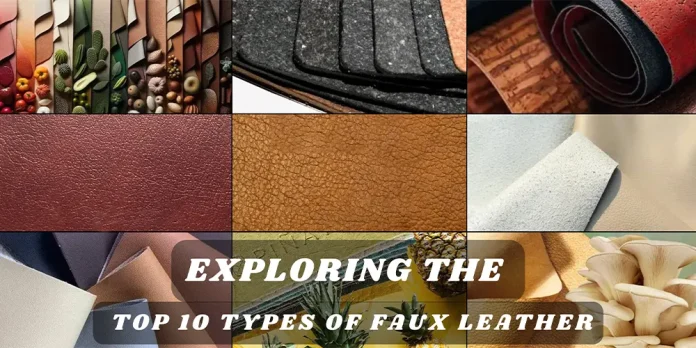10 Types of Faux Leather
Faux leather has become a staple within international fashion, home decor, and accessories, providing a cruelty-free and less expensive alternative to proper leather. With advancements in technology, a variety of faux leather forges have emerged, each with unique features, textures, and uses. Whether you’re buying a jacket, bag, or furnishings, understanding the different types of faux leather helps you make an informed choice.
In this blog, we’ll explore the top 10 sorts of faux leather-based, their capabilities, and how they compare to each other.
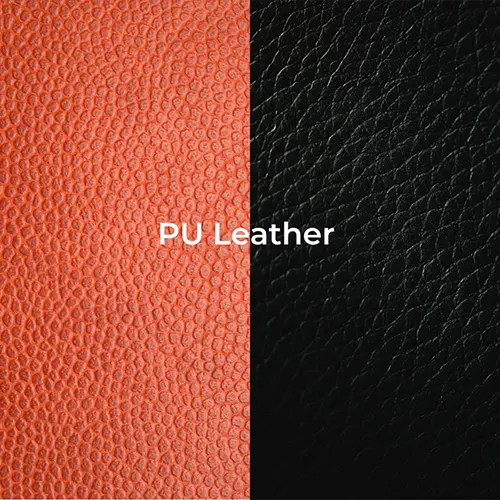
1. PU Leather (Polyurethane Leather)
What It Is:
PU leather is one of the most commonplace forms of faux leather, made by using applying a polyurethane coating to a material base (generally cotton or polyester). This coating gives the fabric its leather-like look and sense.
Key Features:
- Soft, flexible, and more breathable in comparison to other faux leathers.
- Affordable and to be had in a huge form of colors and textures.
- Less long-lasting than actual leather and is at risk of cracking and peeling over the years.
Common Uses:
PU leather is widely used in jackets, bags, shoes, and fixtures. It’s a price range-pleasant alternative for everyday wear however won’t be as long-lasting as different options.
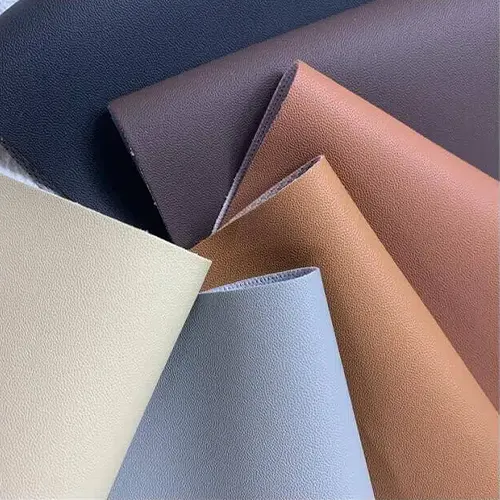
2. PVC Leather (Polyvinyl Chloride Leather)
What It Is:
PVC leather is another famous faux leather material crafted from a layer of polyvinyl chloride (PVC) mixed with components along with plasticizers and stabilizers, which create a bendy, leather-like texture.
Key Features:
- Water-resistant and especially long-lasting.
- Can withstand scratches and heavy use.
- Less breathable than PU leather, making it less comfortable in warm weather.
Common Uses:
PVC leather is usually utilized in upholstery, car interiors, shoes, and baggage. Its durability makes it suitable for products that experience common use.
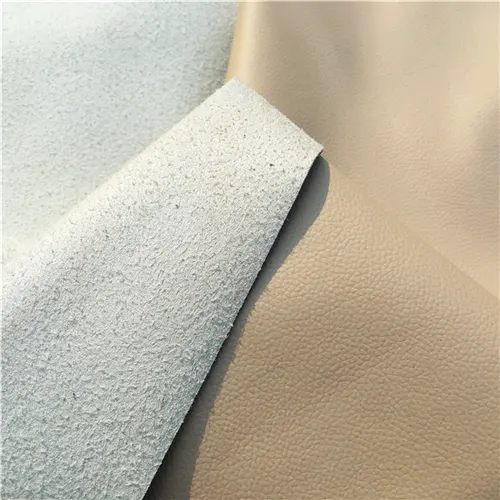
3. Microfiber Leather
What It Is:
Microfiber leather is made from ultra-great fibers that mimic the appearance and feel of genuine leather. It is often considered one of the most exquisite faux leather alternatives due to its softness and durability.
Key Features:
- Extremely soft to the touch and more breathable than PVC or PU leather-based.
- High resistance to put on, tear, and fading.
- Eco-pleasant, as it’s far often crafted from recycled substances.
Common Uses:
Microfiber leather is often utilized in high-end faux leather merchandise such as jackets, shoes, and handbags. Its sturdiness additionally makes it a favorite for furniture and car seats.
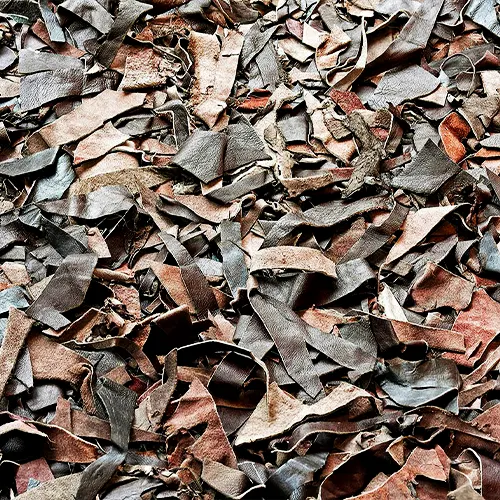
4. Recycled Leather
What It Is:
Recycled leather is crafted from shredded scraps of authentic leather, blended with a polyurethane or latex binder. This creates a cloth that offers some of the features of real leather while being greater affordable and eco-friendly.
Key Features:
- Eco-conscious desire as it reduces waste.
- Retains a number of the textures and traits of actual leather.
- Less durable than complete-grain or top-grain leather-based however more low cost.
Common Uses:
Recycled leather is utilized in furnishings, fashion accessories, and a few kinds of footwear and jackets. It gives a sustainable alternative for the ones looking for a leather-like product.
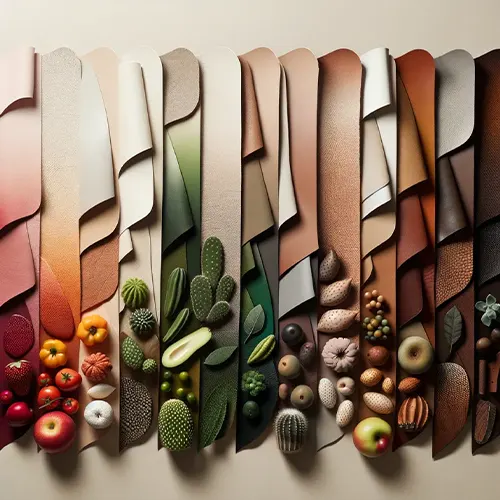
5. Vegan Leather
What It Is:
Vegan leather is an umbrella term for faux leather-based materials that might be 100% free from animal products. This includes PU leather, PVC leather, and different synthetic alternatives, in addition to plant-based total leathers like Pinatex and mushroom leather.
Key Features:
- Cruelty-free and animal-friendly.
- Available in a huge variety of textures, finishes, and features.
- Depending on the material, it could be green or have a lower environmental effect than traditional synthetic leather.
Common Uses:
Vegan leather is utilized in the whole thing from style gadgets like jackets and luggage to upholstery and vehicle interiors. It’s an ideal preference for the ones trying to keep away from animal-primarily based substances.
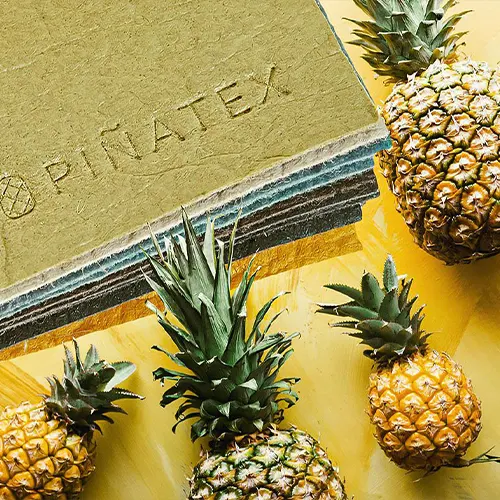
6. Pinatex (Pineapple Leather)
What It Is:
Pinatex is a modern faux leather fabric crafted from the fibers of pineapple leaves. It’s one of the rising plant-based leathers that integrate sustainability with fashion.
Key Features:
- Highly sustainable and eco-friendly as it makes use of agricultural waste.
- Durable and breathable, with a unique texture that resembles leather-based.
- Still extraordinarily high-priced compared to artificial faux leather.
Common Uses:
Pinatex is utilized in fashion items like shoes, bags, and jackets, as well as in home décor. It’s a splendid choice for eco-conscious purchasers.
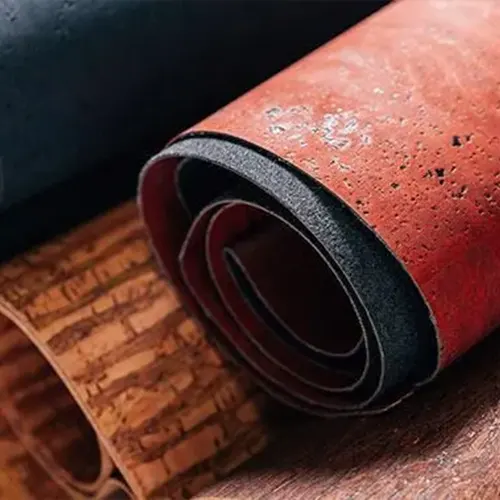
7. Cork Leather
What It Is:
Cork leather is a natural, sustainable cloth made from the bark of cork very welltrees. It has an extraordinary, textured look that makes it stand out from other faux leather alternatives.
Key Features:
- A 100% biodegradable and eco-friendly.
- Lightweight, durable, and water-proof.
- Has a unique, earthy texture that might not suit every person’s taste.
Common Uses:
Cork leather is utilized in baggage, wallets, footwear, or even fixtures. It’s a famous preference for eco-conscious manufacturers searching out a herbal leather opportunity.
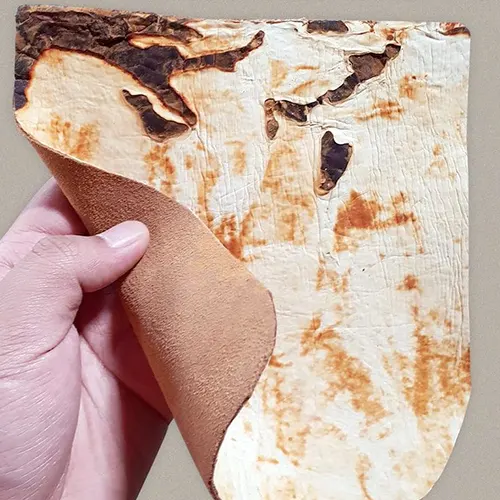
8. Mushroom Leather (Mycelium Leather)
What It Is:
Mushroom leather is crafted from the foundation structure of fungi, referred to as mycelium. This plant-primarily leather alternative is biodegradable and has a similar texture to true leather.
Key Features:
- Highly sustainable and biodegradable.
- Soft and supple, with a natural leather-like texture.
- Still in its early stages of mass production, so it can be harder to locate.
Common Uses:
Mushroom leather is being explored for use in fashion gadgets like shoes, jackets, and luggage. It offers a sustainable and cruelty-free opportunity to conventional leather.
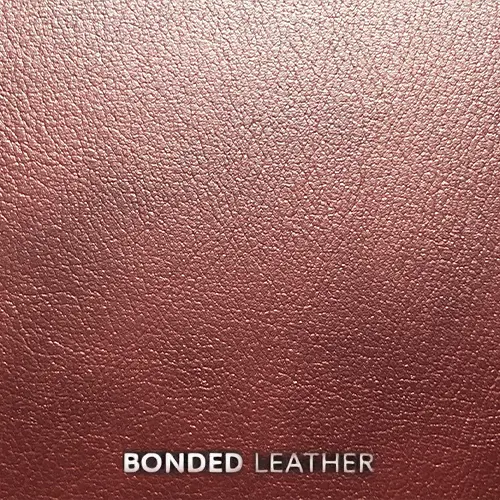
9. Bonded Leather
What It Is:
Bonded leather is crafted from leftover scraps of actual leather, mixed with polyurethane and other binders to create a leather-like cloth. Although it contains real leather, it’s taken into consideration faux leather because of its blended composition.
Key Features:
- Affordable and uses leather-based waste, making it a greater green option.
- Has some characteristics of genuine leather-based however is not as long-lasting.
- Prone to peeling and cracking over the years.
Common Uses:
Bonded leather is typically utilized in furniture, belts, and luggage. It offers a low-priced leather-based-like option for customers in a price range.
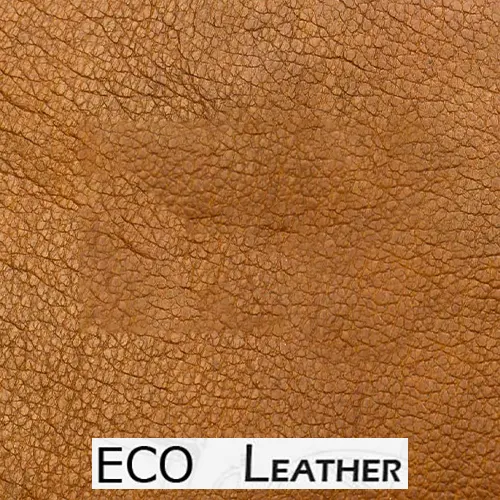
10. Eco Leather
What It Is:
Eco leather refers to any sort of faux leather that is produced with environmental sustainability in thoughts. This can encompass substances like recycled leather, Pinatex, and mushroom leather, as well as artificial leathers produced by the use of fewer chemicals and more eco-friendly tactics.
Key Features:
- Environmentally conscious and often biodegradable or recyclable.
- Can range significantly in texture and durability, depending on the fabric.
- More high priced than conventional faux leather however offers a reduced environmental effect.
Common Uses:
Eco-leather is used in style, fixtures, and add-ons. It’s an exceptional choice for purchasers searching out a sustainable and ethical opportunity for each proper leather and traditional faux leather.
Conclusion
Faux leather gives an extensive variety of alternatives, from traditional PU and PVC leather to modern plant totally alternatives like Pinatex and mushroom leather. Each sort of faux leather has its unique advantages, making it critical to select the right cloth based totally on your needs—whether that’s sturdiness, eco-friendliness, or price range.
By exploring these 10 popular varieties of faux leather, you may find a nice alternative for your next jacket, purse, or home décor mission, all while staying cruelty-free and fashionable.
If you want to own one of the best collections of faux leather jackets and coats, shop your trusted in Brand Fauxjacket today.


